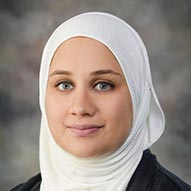Dallas
214-456-2793
Fax: 214-456-5885
Plano
214-456-2793
Fax: 214-456-5885
Periodic limb movement disorder (PLMD) describes the uncontrolled and repetitive movements that occur during sleep
214-456-2793
Fax: 214-456-5885
214-456-2793
Fax: 214-456-5885
PLMD is a neurological disorder (impacting the brain, spine and connecting nerves) that affects a child’s ability to lie still during the night and may impact the duration and quality of sleep. Formerly known as sleep myoclonus or nocturnal myoclonus, PLMD can affect any age or gender.
The brief movements typically occur in the legs every 20 to 40 seconds. They happen in clusters, which can last from a few minutes to a few hours. The PLMD motions can come and go and may not happen every night. The clusters’ time lengths may also vary.
Most children and adolescents are unaware that they are occurring, but stronger motions often wake a child up from sleep. The PLMD movements can be brief muscle twitches, jerking, leg kicks (jerky legs) or cause the foot to flex. Children with PLMD also often have restless leg syndrome (RLS), which is an uncontrollable need to move their legs while awake, typically in response to pain or discomfort.
PLMD and RLS are both unconscious and uncontrollable needs to move the lower limbs. The difference is when they occur – children with PLMD symptoms will be asleep and not aware that they are occurring. RLS symptoms occur when children are awake.
Children may wake up in the middle of the night or have chronic insomnia. They may also have difficulty staying asleep, which can cause extreme daytime tiredness and may also lead to other sleep disorders.
Additional symptoms for PLMD may vary and come and go, including the following:
The exact cause of PLMD is unknown. Experts have suggested the underlying sources may be related to low iron levels (with or without anemia) or problems with nerve conduction (the speed and strength of the nerve signal between cells) due to a chronic disease. Studies haven’t shown consistent reasons behind this neurological disorder.
Some factors can increase the chances of being diagnosed with PLMD and can make the PLMD symptoms worse, including:







